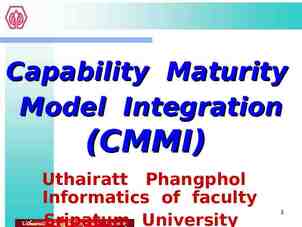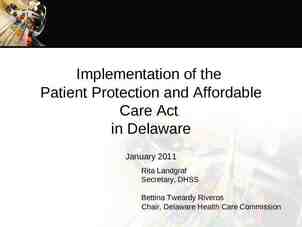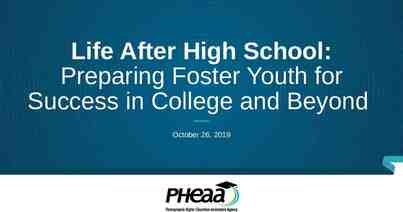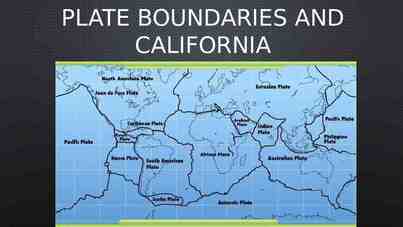Rural CCMR Accelerator Program Application Information
21 Slides262.93 KB

Rural CCMR Accelerator Program Application Information

Table of Contents 3 Overview 4 Timeline and Benefits 5 How to Apply 6 Important Definitions 7 Application Questions 12 Appendix: Eligible Rural District List 2

OVERVIEW: Who is The Texas Impact Network? The Texas Impact Network (TIN) is a joint venture of Educate Texas and the Commit Partnership—a collaboration aimed at building capacity in school districts across the state of Texas to increase student success. The Program TIN recognizes that rural districts have the passion and dedication, but not always the resources, to improve college, career, and military-readiness outcomes and successful postsecondary transitions for their high school students. For this reason, TIN is launching a program extending expert support and start-up funding to implement CCMR interventions in select rural Texas school districts. Specifically, we will work with participating rural school districts to: Develop low-cost, high-impact CCMR strategies Achieve their Accountability Targets and CCMR Board Goals Access new state funding from House Bill 3 (HB 3) to improve postsecondary outcomes This program consists of two distinct phases. Districts who complete this application are eligible for Phase 1. Districts who complete the Phase 1 planning process will be eligible to submit an application for Phase 2 in the future.* Phase 1 TIN will select up to 20 districts and pair them with a team of experts to review student outcomes data, assess current CCMR programming needs, and develop a customized CCMR strategic plan. This plan will lay out low-cost, high-impact strategies to meet your district’s CCMR goals and set you up to apply for implementation support and grant funding in Phase 2. The support in Phase 1 will be provided by TIN at no cost to the district. Phase 2 TIN will extend an invitation to up to 15 districts (chosen from Phase 1 participants) to apply to participate in a pilot that will run the duration of the 2021-2022 school year. The pilot will focus on the implementation of the strategies identified in Phase 1, with a specific emphasis on enhanced student advising. Participation benefits of Phase 2 include access to expert implementation support and a subsidy covering up to 75% of a district’s pilot start-up costs (capped at 100,000). For more information on anticipated pilot costs, please attend one of two information sessions on February 16th from 2:30-3:30 PM CT or on February 24 th from 2:00-3:00 PM CT. You can sign-up to participate here (February 16th) or here (February 24th). *TIN may extend additional opportunities to districts with successful interventions into additional phases. 3

TIMELINE Those who are selected to participate in the program will engage in activities according to the following timeline: Phase 1 – Strategic Planning April 2021: All selected districts will participate in an introductory orientation to review the program’s objectives, receive guidance on next steps and meet their strategic planning partner. April-May 2021: TIN and the strategic planning partners work closely with each district to develop and analyze student outcomes data, develop a strategic plan, and identify specific low-cost, high-impact strategies to meet student needs. May 2021: TIN will invite up to 20 districts to participate in Phase 2—the Implementation Pilot. Phase 2 – Implementation Pilot May-July 2021: Districts selected for Phase 2 begin working with an expert implementation team to prepare their districts for participation in the pilot. July-August 2021: As needed, districts participate in ongoing pilot coordination to prepare for the school year. August 2021-Summer 2022: The pilot launches. Note: The above timeline may be subject to change. BENEFITS Participation in the TIN Rural CCMR program extends benefits to all applicants. Specific benefits include: All applicants: A report synthesizing the CCMR findings that surfaced across all applications, providing districts insight into the rural Texas CCMR landscape Phase 1 Participants: A customized CCMR strategic plan and needs assessment developed in partnership with expert service providers at no cost to the district Phase 2 Participants: Start-up funding to implement an advising intervention Assistance with capturing state CCMR funding (via the newly instituted HB3 CCMR Outcomes Bonus opportunity) Ongoing support from expert implementation providers with experience working with advising in rural school systems Professional learning opportunities with peers across the state 4

HOW TO APPLY To apply to be a part of this program, please complete a short application found at this link https://surveyst.cicerogroup.com/TINCCMR/login.html by March 12, 2021. We encourage applicants to complete this form in concert with a cross-collaborative team of district and high school leadership to provide collective responses that accurately reflect the current environment at your district and high school(s). Note: TIN will be running two information sessions for districts to learn more. February 16th from 2:30-3:30 PM CT: Sign up here February 24th at 2:00-3:00 PM CT: Sign up here If you have specific questions regarding this program, please contact us at [email protected]. We look forward to reviewing your submissions and appreciate your participation! 5

IMPORTANT DEFINITIONS CCMR Activities “College, career, and military-readiness activities” means activities beyond typical classroom instruction that are designed to increase the number of students achieving desirable postsecondary outcomes, such as 2year or 4-year college enrollment, industry-based certification attainment, or military enlistment. These activities may be tactical or strategic in nature (e.g., ACT/SAT preparation vs. building a college going culture). The District The combined personnel and activities of a district office and its affiliated high school(s) (includes charter districts or public charter schools). Rural A campus within a district with fewer than 5,000 enrolled students that is categorized as rural by the Texas Education Agency and the National Center for Education Statistics (see TEA’s Teacher Incentive Allotment definition for more details). A list of the eligible rural districts can be found at in the Appendix. 6

APPLICATION QUESTIONS Note: To submit your responses to the questions shown on the subsequent pages, please apply here: https://surveyst.cicerogroup.com/TINCCMR/cgi-bin/ciwweb.pl?studyname 210113 Section 1: Contact Information 1. Please provide information for this application’s primary point of contact. a. First Name b. Last Name c. Job Title d. Email e. Phone Number 2. What Education Service Center (ESC) region is your school district in? If you are unsure, please visit this website to identify your region: https://tea.texas.gov/about-tea/other-services/education-service-centers. 3. What School District do you represent? Section 2: Terms of Participation This section seeks your approval on two of the pilot’s participation requirements. 4. Since CCMR data will play a critical role in strategic planning for each district, those who are chosen to participate in the strategic planning and/or pilot phase will be asked to provide district-, school-, and (anonymized) student-level CCMR data to the Texas Impact Network. The data will be used to determine CCMR outcome trends and HB 3 CCMR funding eligibility (newly available state funding). Once chosen for the program, continuous and up-to-date data sharing will be required of all participants during the tenure of their involvement. All data-sharing will comply with FERPA and will be obtained via a data-sharing agreement. a. My district is willing to provide pertinent CCMR data under the privacy parameters outlined above. b. My district declines to provide pertinent CCMR data under the privacy parameters outlined above. 7

2. In exchange for participation in Phase 2, participants will receive access to expert implementation support and a subsidy covering up to 75% of a district’s pilot start-up costs (capped at 100,000). A district will play an active role in determining the financial costs of the intervention and may decline participation in the Phase 2 pilot before making any financial commitments. (Note that the long-term goal of this program is to ensure the financial stability of the pilot through state funding—specifically, House Bill 3 CCMR Outcomes Bonus funding.) a. If my district chooses to participate in the Phase 2 pilot, my district acknowledges that it will be required to make a matching contribution meeting the requirements outlined above. b. My district declines to explore matching contributions in Phase 2 if invited to participate in Phase 2. Section 3: Current CCMR Activities In this section, we will ask you about the current CCMR activities taking place within your district. Our program is looking for a diverse set of districts, and there are no “correct” answers in this section. Therefore, please be as transparent with your answers as possible. 3. Please indicate district’s CCMR a. Our district b. Our district c. Our district d. Our district e. Our district f. Our district which of the following statements is true about your plans, budget, and staff: has official, documented CCMR goals. has a comprehensive, documented strategic CCMR plan. has sufficient budget dedicated to CCMR activities. With fidelity office has dedicated staff tasked with leading CCMR activities. has staff at the high school(s) tasked with leading CCMR activities. has the tools to track and review CCMR data in real-time. 4. Please indicate the degree to which you agree with the following statements. [5-point scale of ‘strongly disagree’ to ‘strongly agree’] a. In our district, students have multiple access points (e.g., in-class, online, after school) to information on post-secondary options and resources b. The district offices collaborate with high school leadership on CCMR efforts c. The district offices collaborate with high school teachers on CCMR efforts d. The high school(s) in the districts are aware of the district’s CCMR goals and strategies e. The district has a good system in place to analyze CCMR data. f. The district actively uses its students’ CCMR data to develop and inform CCMR initiatives and interventions. 5. How many CCMR staff in the district offices (e.g., assistant superintendents of secondary education) are officially tasked with carrying out or overseeing CCMR activities? 8

4. Please complete this sentence: “On average, our district-level CCMR staff spends ” a. 100% of their time leading CCMR activities. b. approximately 50% of their time leading CCMR activities. c. approximately 25% of their time leading CCMR activities. d. little to no time leading CCMR activities. 5. How many CCMR staff at the high school(s) are officially tasked with carrying out or overseeing CCMR activities? 6. Please select the statement that most closely approximates how your high school CCMR staff member(s) spends their time. “Our high school CCMR staff spends a. b. c. d. 100% of their time leading CCMR activities. approximately 50% of their time leading CCMR activities. approximately 25% of their time leading CCMR activities. little to no time leading CCMR activities. 7. If applicable, please describe in 100-200 words what CCMR activities your district implemented that noticeably improved CCMR student outcomes. Please be specific about the methodology of your intervention, the data you used to confirm your outcomes, and the reason you felt it was successful. 8. If applicable, please describe in 100-200 words what CCMR activities implemented in your district produced few, if any, results. Please be specific about the methodology of your intervention, the data you used to confirm your outcomes, and the reason you felt it achieved limited success. 9. If applicable, please describe in 50-100 words what barriers are currently in the way of you achieving higher CCMR outcomes in your district (e.g., limited budget, lack of staff buy-in). 9

Section 4: CCMR Support The next few questions will ask you about the type of support that exists for CCMR activities within your district. Again, there are no right or wrong answers; the pilot seeks districts with differing levels of support. Therefore, please be as transparent with your answers as possible. 1. Please indicate the extent to which you agree or disagree with each of the statements below. [5-point scale of ‘strongly disagree’ to ‘strongly agree’] a. We have a strong college-going culture among staff and students within our district. b. Students within the district have high levels of CCMR support from family and friends. c. Our district has strong relationships with prospective employers. d. Our district has strong relationships with our regional colleges and/or universities. e. Our district has strong relationships with military recruiters. f. Our district has strong relationships with our regional workforce development board g. Our district has strong relationships with our regional Education Service Center 2. Are there any other ways in which individuals or organizations have showed support for your district’s CCMR activities? Please provide specific examples to help us understand the nature of their support. 3. If applicable, please explain in 50-100 words if there are new or existing partnerships to which your district wishes it had (better) access. Please be sure to explain why these partnerships are of interest to you. 10

Section 5: CCMR Aspirations and Commitment Finally, we would like to hear about what CCMR initiatives or interventions you would be interested in implementing if you were part of the Texas Impact Network CCMR Pilot. Again, there are no right or wrong answers. Therefore, please be as transparent with your answers as possible. 1. As you think about the types of CCMR initiatives your district could implement, which of the following activities are of most interest to your district? Please rank the items listed. The closer you place the item to the top of the list, the “more interested” you are the initiative. a. Establishing or strengthening a high school CCMR advising model b. Providing students with career exploration opportunities c. Building a college-going culture d. Improving CCMR data collection and analysis capabilities e. Developing a CCMR-focused training for teachers f. Developing a CCMR-focused training for advisors/counselors g. Developing a CCMR-focused training for district and school administrators h. Developing or strengthening dual credit/dual-enrollment offerings i. Developing or strengthening career and technical education (CTE)/industrybased certification pathways j. Improving parental/family engagement k. ACT/SAT/TSIA teacher training l. ACT/SAT/TSIA student preparation m. Expansion of AP/IB courses n. Other initiatives to improve student CCMR academic readiness, please specify 2. Of the top three CCMR initiatives you selected, how interested would you be in implementing each of these? (Assume that you have the needed resources to pursue these opportunities.) 3. Are there any other CCMR initiatives, not yet mentioned, in which your district is interested? Please provide enough detail to demonstrate why and how they are substantively different from the previously proposed initiatives. (Again, assume you have the needed resources to implement them.) 4. Considering your district needs and the CCMR initiatives listed previously, please describe in 50-100 words what “CCMR success” would look like for your district. Note that your vision of success should be measurable and strive to strike a balance between being aspirational and realistic. 11

5. In considering the resources your district would need to successfully implement its desired CCMR initiatives/interventions, please indicate how great your need would be for each of the resources listed below. [5-point scale of ‘no need’ to ‘extreme need’] a. Increased budget b. Increased number of district-level staff c. External expertise (e.g., data analysis, trainings) d. Data collection software e. Additional advising staff f. Materials and supplies 6. Are there any additional resources, not yet mentioned, that your district would need to successfully implement its desired CCMR initiatives? Please explain. 7. If chosen for participation in the TIN CCMR Accelerator Program, who would be the lead contact within your district leading out on this activity? 12

APPENDIX: Eligible Rural District List (1 of 9) This list represents the list of eligible “rural” school districts as defined by the 2019-2020 TEA Teacher Incentive Allotment glossary. If you cannot find your district on this list, but you (1) now, in 2021, qualify as a “rural” district or (2) are a public charter district or public charter school, please contact us at [email protected] to confirm your eligibility to apply. Abbott ISD Apple Springs ISD Bartlett ISD Bloomington ISD Bridge City ISD Abernathy ISD Aquilla ISD Bay City ISD Blue Ridge ISD Bridgeport ISD Academy For Academic Excellence Archer City ISD Beckville ISD Bluff Dale ISD Broaddus ISD Academy ISD Argyle ISD Beeville ISD Blum ISD Brock ISD Accelerated Intermediate Academy Arp ISD Bellevue ISD Boles ISD Bronte ISD Adrian ISD Aspermont ISD Bells ISD Boling ISD Brookeland ISD Agua Dulce ISD Athens ISD Bellville ISD Booker ISD Brookesmith ISD Alba-Golden ISD Atlanta ISD Ben Bolt-Palito Blanco ISD Borden County ISD Brooks County ISD Albany ISD Aubrey ISD Benavides ISD Borger ISD Brownfield ISD Alpine ISD Austwell-Tivoli ISD Benjamin ISD Bosqueville ISD Brownsboro ISD Alto ISD Avalon ISD Big Sandy ISD Bovina ISD Brownwood ISD Alvarado ISD Avery ISD Big Spring ISD Bowie ISD Bruceville-Eddy ISD Alvord ISD Avinger ISD Big Springs Charter School Boyd ISD Bryson ISD Amherst ISD Axtell ISD Bishop CISD Boys Ranch ISD Buckholts ISD Anahuac ISD Baird ISD Blackwell CISD Brackett ISD Buena Vista ISD Anderson-Shiro CISD Ballinger ISD Blanco ISD Brady ISD Buffalo ISD Anna ISD Balmorhea ISD Bland ISD Brazos ISD Bullard ISD Anson ISD Bandera ISD Blanket ISD Brazos River Charter School Buna ISD Anthony ISD Bangs ISD Bloomburg ISD Breckenridge ISD Burkburnett ISD Anton ISD Banquete ISD Blooming Grove ISD Bremond ISD Burkeville ISD 13

Eligible Rural District List (2 of 9) This list represents the list of eligible “rural” school districts as defined by the 2019-2020 TEA Teacher Incentive Allotment glossary. If you cannot find your district on this list, but you (1) now, in 2021, qualify as a “rural” district or (2) are a public charter district or public charter school, please contact us at [email protected] to confirm your eligibility to apply. Burnet CISD Centerville ISD Claude ISD Corrigan-Camden ISD Cushing ISD Burton ISD Central Heights ISD Clifton ISD Cotton Center ISD Daingerfield-Lone Star ISD Bushland ISD Central ISD Clyde CISD Cotulla ISD Dalhart ISD Bynum ISD Channing ISD Coahoma ISD Coupland ISD Damon ISD Caddo Mills ISD Chapel Hill ISD Coldspring-Oakhurst CISD Covington ISD Danbury ISD Calallen ISD Charlotte ISD Coleman ISD Crandall ISD Darrouzett ISD Caldwell ISD Cherokee ISD Collinsville ISD Cranfills Gap ISD Dawson ISD Calhoun County ISD Chester ISD Colmesneil ISD Crawford ISD De Leon ISD Callisburg ISD Chico ISD Colorado ISD Crockett County Consolidated CSD Decatur ISD Calvert ISD Childress ISD Columbia-Brazoria ISD Crockett ISD Dekalb ISD Cameron ISD Chillicothe ISD Columbus ISD Crosbyton CISD Dell City ISD Campbell ISD Chilton ISD Comanche ISD Cross Plains ISD Denison ISD Canadian ISD China Spring ISD Comfort ISD Cross Roads ISD Denver City ISD Carlisle ISD Chireno ISD Commerce ISD Crosstimbers Academy Detroit ISD Carthage ISD Chisum ISD Community ISD Crowell ISD Devers ISD Cayuga ISD Christoval ISD Como-Pickton CISD Crystal City ISD Devine ISD Celeste ISD Cisco ISD Comstock ISD Cuero ISD Dew ISD Celina ISD City View ISD Connally ISD Culberson CountyAllamoore ISD Deweyville ISD Center ISD Clarendon ISD Coolidge ISD Cumberland Academy D'Hanis ISD Center Point ISD Clarksville ISD Cooper ISD Cumby ISD Diboll ISD 14

Eligible Rural District List (3 of 9) This list represents the list of eligible “rural” school districts as defined by the 2019-2020 TEA Teacher Incentive Allotment glossary. If you cannot find your district on this list, but you (1) now, in 2021, qualify as a “rural” district or (2) are a public charter district or public charter school, please contact us at [email protected] to confirm your eligibility to apply. Dilley ISD Elkhart ISD Flatonia ISD Ganado ISD Graford ISD Dime Box ISD Elysian Fields ISD Florence ISD Garner ISD Graham ISD Divide ISD Era ISD Floresville ISD Garrison ISD Grand Saline ISD Dodd City ISD Erath Excels Academy Inc Floydada ISD Gary ISD Grandfalls-Royalty ISD Doss Consolidated CSD Etoile ISD Follett ISD Gause ISD Grandview ISD Douglass ISD Eula ISD Forestburg ISD George West ISD Grandview-Hopkins ISD Driscoll ISD Eustace ISD Forsan ISD Gholson ISD Granger ISD Dublin ISD Evadale ISD Fort Elliott CISD Giddings ISD Grape Creek ISD Dumas ISD Evant ISD Fort Stockton ISD Gilmer ISD Grapeland ISD Early ISD Excel Academy Franklin ISD Glasscock County ISD Greenwood ISD East Bernard ISD Excelsior ISD Frankston ISD Glen Rose ISD Gregory-Portland ISD Eastland ISD Ezzell ISD Fredericksburg ISD Godley ISD Groesbeck ISD Ector ISD Fabens ISD Freer ISD Gold Burg ISD Groom ISD Edcouch-Elsa ISD Fairfield ISD Friona ISD Goldthwaite ISD Groveton ISD Eden CISD Falls City ISD Frost ISD Goliad ISD Gruver ISD Edgewood ISD Fannindel ISD Fruitvale ISD Gonzales ISD Gunter ISD Edna ISD Farmersville ISD Ft Davis ISD Goodrich ISD Gustine ISD El Campo ISD Farwell ISD Ft Hancock ISD Gordon ISD Guthrie CSD Electra ISD Fayetteville ISD Ft Sam Houston ISD Gorman ISD Hale Center ISD Elgin ISD Ferris ISD Gainesville ISD Grady ISD Hallettsville ISD 15

Eligible Rural District List (4 of 9) This list represents the list of eligible “rural” school districts as defined by the 2019-2020 TEA Teacher Incentive Allotment glossary. If you cannot find your district on this list, but you (1) now, in 2021, qualify as a “rural” district or (2) are a public charter district or public charter school, please contact us at [email protected] to confirm your eligibility to apply. Hallsburg ISD Hempstead ISD Huffman ISD Jayton-Girard ISD Kingsville ISD Hamilton ISD Henderson ISD Hull-Daisetta ISD Jefferson ISD Kirbyville CISD Hamlin Collegiate ISD Henrietta ISD Hunt ISD Jim Hogg County ISD Klondike ISD Hamshire-Fannett ISD Hermleigh ISD Huntington ISD Jim Ned CISD Knippa ISD Happy ISD Hico ISD Idalou ISD Joaquin ISD Knox City-O'Brien CISD Hardin ISD Hidalgo ISD Industrial ISD Johnson City ISD Kopperl ISD Hardin-Jefferson ISD Higgins ISD Ingleside ISD Jonesboro ISD Kountze ISD Harleton ISD High Island ISD Ingram ISD Jourdanton ISD Kress ISD Harmony ISD Highland ISD Inspire Academies Junction ISD Krum ISD Harper ISD Highland Park ISD Iola ISD Karnack ISD La Feria ISD Harrold ISD Hillsboro ISD Ira ISD Karnes City ISD La Gloria ISD Hart ISD Holland ISD Iraan-Sheffield ISD Keene ISD La Grange ISD Hartley ISD Holliday ISD Iredell ISD Kelton ISD La Pryor ISD Harts Bluff ISD Hondo ISD Irion County ISD Kemp ISD La Vernia ISD Haskell CISD Honey Grove ISD Italy ISD Kenedy County Wide CSD La Villa ISD Hawkins ISD Hooks ISD Itasca ISD Kenedy ISD Lackland ISD Hawley ISD Howe ISD Jacksboro ISD Kennard ISD Lago Vista ISD Hearne ISD Hubbard ISD Jacksonville ISD Kerens ISD Lamesa ISD Hedley ISD Huckabay ISD Jarrell ISD Kerrville ISD Lampasas ISD Hemphill ISD Hudson ISD Jasper ISD Kilgore ISD Laneville ISD 16

Eligible Rural District List (5 of 9) This list represents the list of eligible “rural” school districts as defined by the 2019-2020 TEA Teacher Incentive Allotment glossary. If you cannot find your district on this list, but you (1) now, in 2021, qualify as a “rural” district or (2) are a public charter district or public charter school, please contact us at [email protected] to confirm your eligibility to apply. Lapoynor ISD Little CypressMauriceville CISD Madisonville CISD Mcgregor ISD Milford ISD Lasara ISD Littlefield ISD Malakoff ISD Mclean ISD Miller Grove ISD Latexo ISD Livingston ISD Malone ISD Mcleod ISD Millsap ISD Lazbuddie ISD Llano ISD Malta ISD Mcmullen County ISD Mineral Wells ISD Leakey ISD Lockney ISD Marathon ISD Meadow ISD Montague ISD Leary ISD Lohn ISD Marble Falls ISD Meadowland Charter District Monte Alto ISD Lefors ISD Lometa ISD Marfa ISD Medina ISD Moody ISD Leggett ISD London ISD Marion ISD Melissa ISD Moran ISD Leon ISD Lone Oak ISD Marlin ISD Memphis ISD Morgan ISD Leonard ISD Loop ISD Mart ISD Menard ISD Morgan Mill ISD Levelland ISD Loraine ISD Martins Mill ISD Mercedes ISD Morton ISD Leveretts Chapel ISD Lorena ISD Martinsville ISD Meridian ISD Motley County ISD Lexington ISD Lorenzo ISD Mason ISD Merkel ISD Moulton ISD Liberty Hill ISD Louise ISD Matagorda ISD Mexia ISD Mount Calm ISD Liberty ISD Lovejoy ISD Mathis ISD Meyersville ISD Mount Enterprise ISD Liberty-Eylau ISD Lovelady ISD Maud ISD Miami ISD Mount Vernon ISD Linden-Kildare CISD Lueders-Avoca ISD May ISD Midway ISD Muenster ISD Lindsay ISD Lyford CISD Maypearl ISD Milano ISD Muleshoe ISD Lingleville ISD Lytle ISD Mccamey ISD Mildred ISD Mullin ISD Lipan ISD Mabank ISD Mcdade ISD Miles ISD Mumford ISD 17

Eligible Rural District List (6 of 9) This list represents the list of eligible “rural” school districts as defined by the 2019-2020 TEA Teacher Incentive Allotment glossary. If you cannot find your district on this list, but you (1) now, in 2021, qualify as a “rural” district or (2) are a public charter district or public charter school, please contact us at [email protected] to confirm your eligibility to apply. Munday CISD Normangee ISD Overton ISD Perryton ISD Prairiland ISD Murchison ISD North Hopkins ISD Paducah ISD Petersburg ISD Premont ISD Natalia ISD North Lamar ISD Paint Creek ISD Petrolia CISD Presidio ISD Navarro ISD North Texas Collegiate Academy Paint Rock ISD Pettus ISD Priddy ISD Navasota ISD North Zulch ISD Palacios ISD Pewitt CISD Pringle-Morse CISD Nazareth ISD Northside ISD Palmer ISD Pilot Point ISD Priority Charter Schools Neches ISD Nueces Canyon CISD Palo Pinto ISD Pioneer Technology & Arts Academy Progreso ISD Needville ISD Nursery ISD Pampa ISD Pittsburg ISD Quanah ISD New Boston ISD Oakwood ISD Panhandle ISD Plains ISD Queen City ISD New Deal ISD Odem-Edroy ISD Panola Charter School Pleasant Grove ISD Quinlan ISD New Diana ISD O'Donnell ISD Panther Creek CISD Plemons-StinnettPhillips CISD Quitman ISD New Home ISD Oglesby ISD Paradise ISD Point Isabel ISD Rains ISD New Summerfield ISD Olfen ISD Paris ISD Ponder ISD Ralls ISD New Waverly ISD Olney ISD Patton Springs ISD Poolville ISD Ramirez CSD Newcastle ISD Olton ISD Pawnee ISD Port Aransas ISD Ranch Academy Newman International Academy Of Ar Onalaska ISD Pearsall ISD Post ISD Randolph Field ISD Newton ISD Orange Grove ISD Peaster ISD Poteet ISD Ranger ISD Nixon-Smiley CISD Orangefield ISD Pecos-BarstowToyah ISD Poth ISD Rankin ISD Nocona ISD Ore City ISD Penelope ISD Prairie Lea ISD Raven School Nordheim ISD Orenda Charter School Perrin-Whitt CISD Prairie Valley ISD Reagan County ISD 18

Eligible Rural District List (7 of 9) This list represents the list of eligible “rural” school districts as defined by the 2019-2020 TEA Teacher Incentive Allotment glossary. If you cannot find your district on this list, but you (1) now, in 2021, qualify as a “rural” district or (2) are a public charter district or public charter school, please contact us at [email protected] to confirm your eligibility to apply. Red Lick ISD Rockdale ISD Sam Rayburn ISD Seagraves ISD Snook ISD Redwater ISD Rocksprings ISD San Augustine ISD Sealy ISD Snyder ISD Refugio ISD Rogers ISD San Diego ISD Seminole ISD Somerset ISD Ricardo ISD Roosevelt ISD San Elizario ISD Seymour ISD Somerville ISD Rice CISD Ropes ISD San Isidro ISD Shallowater ISD Sonora ISD Rice ISD Roscoe Collegiate ISD San Perlita ISD Shamrock ISD South Texas ISD Richards ISD Rosebud-Lott ISD San Saba ISD Shelbyville ISD Southland ISD Richland Springs ISD Rotan ISD San Vicente ISD Shepherd ISD Southwest Preparatory School Riesel ISD Round Top-Carmine ISD Sands CISD Shiner ISD Spearman ISD Rio Hondo ISD Royal ISD Sanford-Fritch ISD Sidney ISD Splendora ISD Rio Vista ISD Rule ISD Sanger ISD Sierra Blanca ISD Spring Creek ISD Rising Star ISD Runge ISD Santa Anna ISD Silverton ISD Springlake-Earth ISD River Road ISD Rusk ISD Santa Gertrudis ISD Simms ISD Springtown ISD Rivercrest ISD S And S CISD Santa Maria ISD Sivells Bend ISD Spur ISD Riviera ISD Sabinal ISD Santa Rosa ISD Skidmore-Tynan ISD Spurger ISD Robert Lee ISD Sabine ISD Santo ISD Slaton ISD Stamford ISD Robinson ISD Sabine Pass ISD Savoy ISD Slidell ISD Stanton ISD Robstown ISD Saint Jo ISD Schleicher ISD Slocum ISD Sterling City ISD Roby CISD Salado ISD Schulenburg ISD Smithville ISD Stockdale ISD Rochelle ISD Saltillo ISD Scurry-Rosser ISD Smyer ISD Stratford ISD 19

Eligible Rural District List (8 of 9) This list represents the list of eligible “rural” school districts as defined by the 2019-2020 TEA Teacher Incentive Allotment glossary. If you cannot find your district on this list, but you (1) now, in 2021, qualify as a “rural” district or (2) are a public charter district or public charter school, please contact us at [email protected] to confirm your eligibility to apply. Strawn ISD Texline ISD Tuloso-Midway ISD Walcott ISD Westlake Academy Charter School Sudan ISD Thorndale ISD Turkey-Quitaque ISD Wall ISD Westphalia ISD Sulphur Bluff ISD Thrall ISD Ume Preparatory Academy Walnut Bend ISD Westwood ISD Sulphur Springs ISD Three Rivers ISD Union Grove ISD Walnut Springs ISD Wharton ISD Sundown ISD Three Way ISD Union Hill ISD Warren ISD Wheeler ISD Sunnyvale ISD Throckmorton Collegiate ISD University Of Texas University Cha Waskom ISD White Deer ISD Sunray ISD Tidehaven ISD Utopia ISD Water Valley ISD Whiteface CISD Sweet Home ISD Timpson ISD Uvalde CISD Waxahachie Faith Family Academy Whitewright ISD Sweetwater ISD Tioga ISD Valentine ISD Webb CISD Whitharral ISD Tahoka ISD Tolar ISD Valley Mills ISD Weimar ISD Whitney ISD Tarkington ISD Tom Bean ISD Valley View ISD Wellington ISD Wildorado ISD Tatum ISD Tornillo ISD Van Alstyne ISD Wellman-Union CISD Wilson ISD Taylor ISD Trent ISD Van ISD Wells ISD Wimberley ISD Teague ISD Trenton ISD Van Vleck ISD West Hardin County CISD Windthorst ISD Tenaha ISD Trinidad ISD Vega ISD West ISD Wink-Loving ISD Terlingua Csd Trinity Charter School Veribest ISD West Orange-Cove CISD Winona ISD Terrell County ISD Trinity ISD Vernon ISD West Rusk County Consolidated ISD Winters ISD Terrell ISD Troup ISD Vidor ISD West Sabine ISD Woden ISD Texas Juvenile Justice Department Troy ISD Vysehrad ISD Westbrook ISD Wolfe City ISD Texhoma ISD Tulia ISD Waelder ISD Westhoff ISD Woodsboro ISD 20

Eligible Rural District List (9 of 9) This list represents the list of eligible “rural” school districts as defined by the 2019-2020 TEA Teacher Incentive Allotment glossary. If you cannot find your district on this list, but you (1) now, in 2021, qualify as a “rural” district or (2) are a public charter district or public charter school, please contact us at [email protected] to confirm your eligibility to apply. Woodson ISD Woodville ISD Wortham ISD Wylie ISD Yantis ISD Yoakum ISD Yorktown ISD Zapata County ISD Zavalla ISD Zephyr ISD 21






